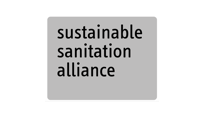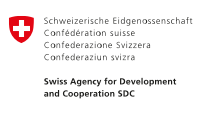A controlled waste pit is a disposal method for household residual waste. The residual waste is deposited in a pit in layers. Each layer is covered with soil until the pit is full.

A controlled waste pit can be dug to dispose of residual solid waste. It is especially appropriate at the household level in rural areas where population density is low. A pit is dug in the ground and waste is deposited in layers. Each layer is covered with soil to prevent smells and animals or pests from accessing the waste. Although it is common practice, the waste should not be burned. A fence is used to protect the pit and avoid accidents and rainwater infiltration is avoided as much as possible to reduce leachate production. For a pit to last longer, and to avoid methane generation, organic waste should be separated at source and treated separately (T.1 to T.5) or recycled whenever possible. Only residual waste should be deposited in the pit.
Design Considerations
A controlled waste pit is dug using simple tools; it can be done manually. A round-shaped pit is preferred as it is more stable. For a household, a suitable pit may have a diameter of 1 m and a depth of 1 to 1.5 meters. The bottom of the pit should be at least 1.5 m above the highest level of the groundwater table. The location of the pit should be at least 15 m away from dwellings and any water source. A typical family of five generates a total waste of 0.5 kg/person/day. If all organics and recyclables are segregated and not disposed of in the pit, it can last between one and two years. Without segregation, the same family would fill their pit in about six months. Once full, the waste is thoroughly compacted, covered with a wire mesh and backfilled with at least 0.5 m of soil cover to close.
Materials
Locally available and simple tools are required to excavate the pit (shovel, pickaxe); the same soil that is excavated is stored next to the pit and used as cover material on the layers of waste. A fence can be constructed with any locally available materials.
Applicability
This technology is more suitable in rural contexts where the population density is low, space is available and, because of the rural way of life, waste generation is low. As waste collection may be difficult to implement in such settings, self-management can be promoted using controlled waste pits. The solution is quick to implement as, once the pit is dug, it is ready to use. It is appropriate when the groundwater table is low and at least 1.5 m deeper than the bottom of the pit. It is most suitable for individual households but could also be shared by multiple households, although this reduces the lifespan of the pit.
Operation and Maintenance
A controlled waste pit is operated and maintained directly by the household or the group of households using it. Its operation includes regularly depositing the household’s solid waste in a layer in the pit. The waste is then covered with 5 cm of soil once a week. If organic waste is properly separated and not added to the pit, the covering can be less frequent than weekly. The controlled pit works best when organics and recyclables are managed separately; otherwise, the pit fills very quickly and a new pit is required. Pit walls can collapse, especially during heavy rain; reworking the pit shape may then be necessary.
Health and Safety
During construction, attention should be paid to soil conditions to prevent wall collapse. If the conditions are unfavourable, the pit should not be dug too deep. As people and animals can fall into the pit, hence it should be protected with a fence to limit the risk. The proliferation of pests is a concern if organic waste is disposed of and/or waste is not covered. Using the pit incorrectly as a burning pit negatively impacts the health of the surrounding population. Personal protective equipment (such as gloves and boots) is recommended if contact with the waste in the pit is expected but this is rare and should not happen in normal operations.
Costs
Investment and operation costs are low. The cost of training households to operate and maintain the pits should be included. When used in the long term, this technology implies hidden costs: each time a new pit is opened, the land for each pit becomes unusable for any other future uses.
Social Considerations
The technology relies heavily on the households operating it properly. This includes segregating organic waste and recyclables to avoid filling the pit too quickly and not burning the waste inside the pit. Proper training and monitoring X.3 of good practices are required to ensure the safe and controlled use of the pits.
Key Decision Criteria
Input Products
Residual Waste
Response Phase
Application Level
Management Level
Space Required
low
Technical Complexity
low
Objectives & Key Features
Safe disposal of solid waste at household level
Strength & Weakness
- Safely disposes of waste at a household level in rural areas with low population density and low waste-generation rates
- A low-cost, easy solution
- Unsuitable for mixed waste as it would fill too quickly requiring a new pit each time
- Unsuitable in urban settings
- Maybe misused as a burning pit [U.11]






